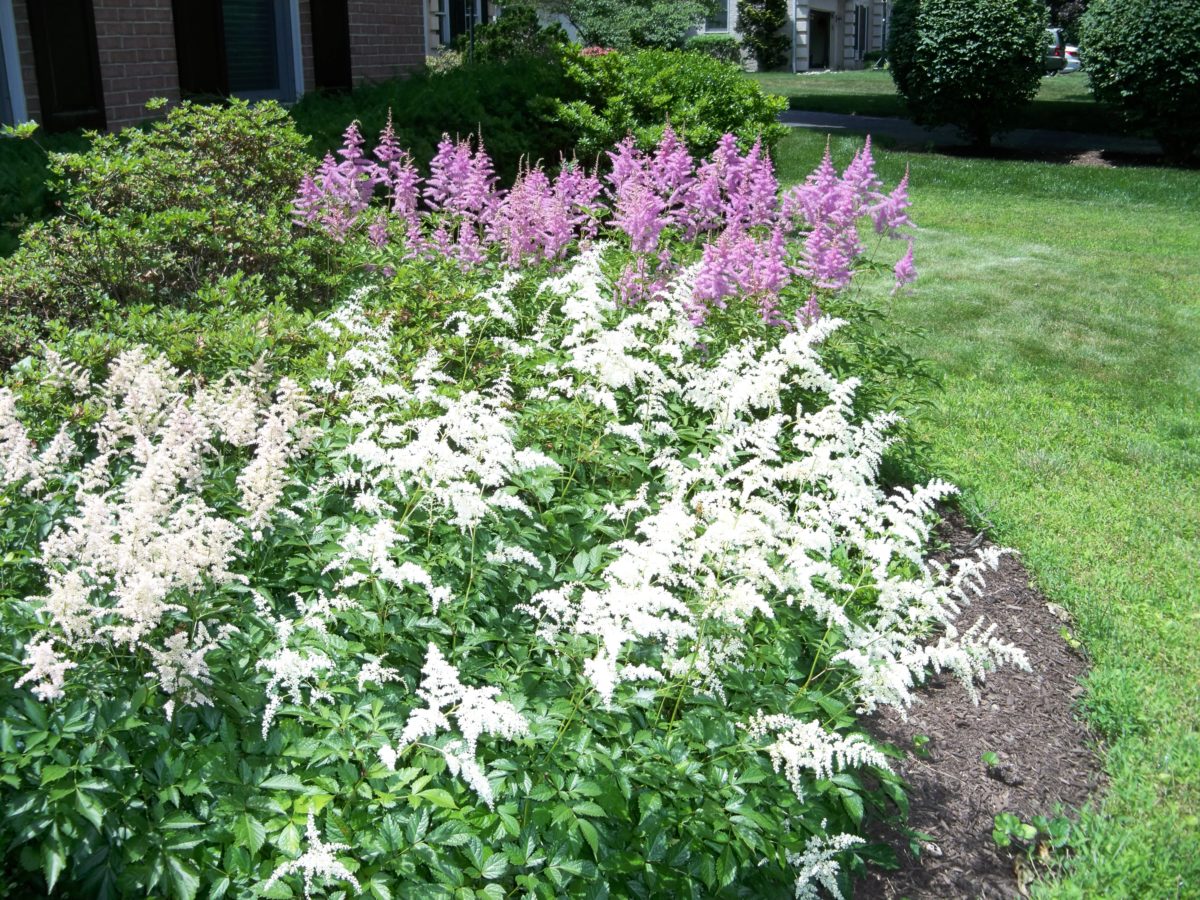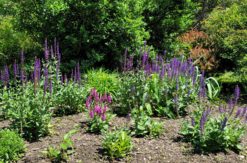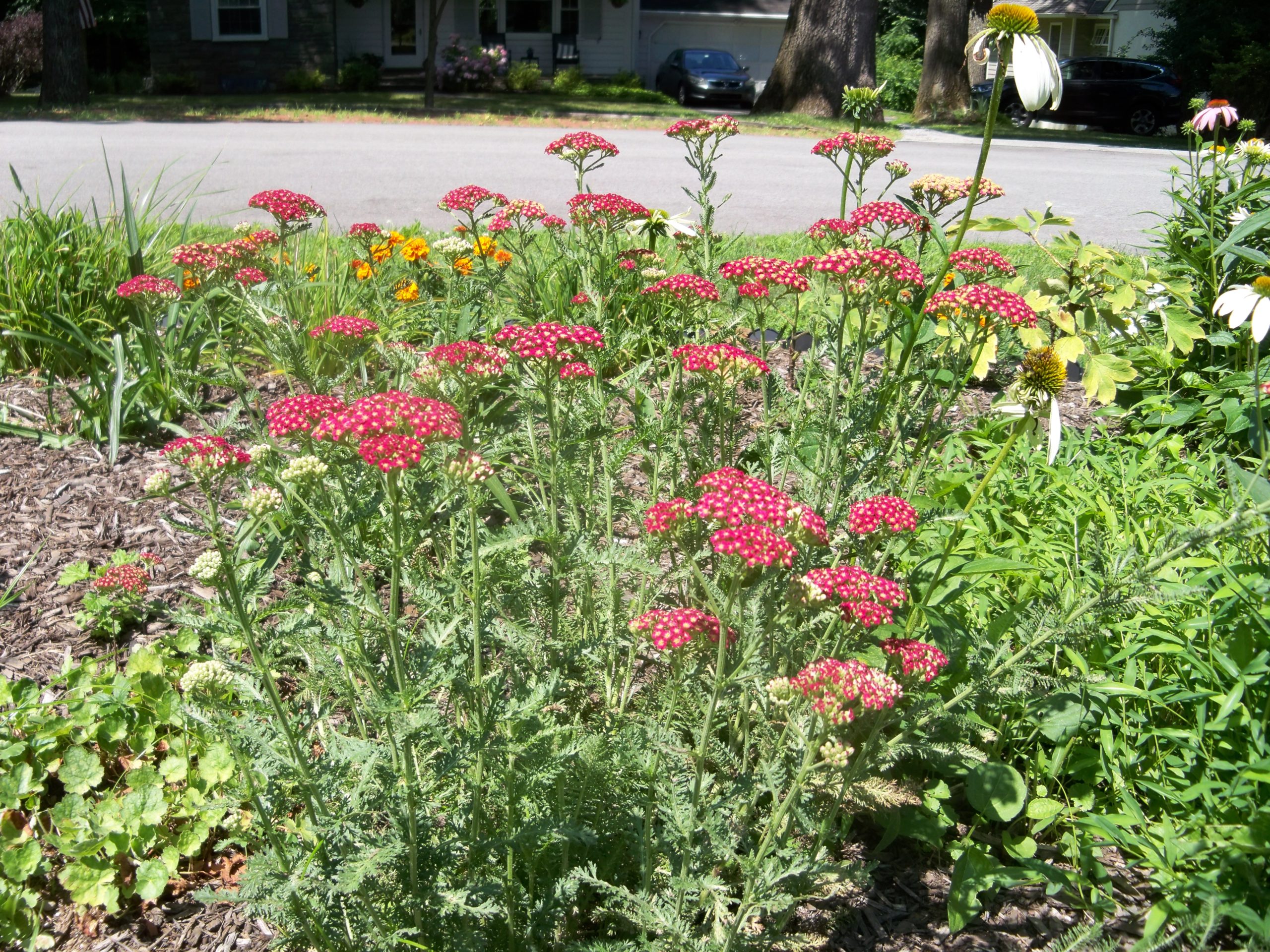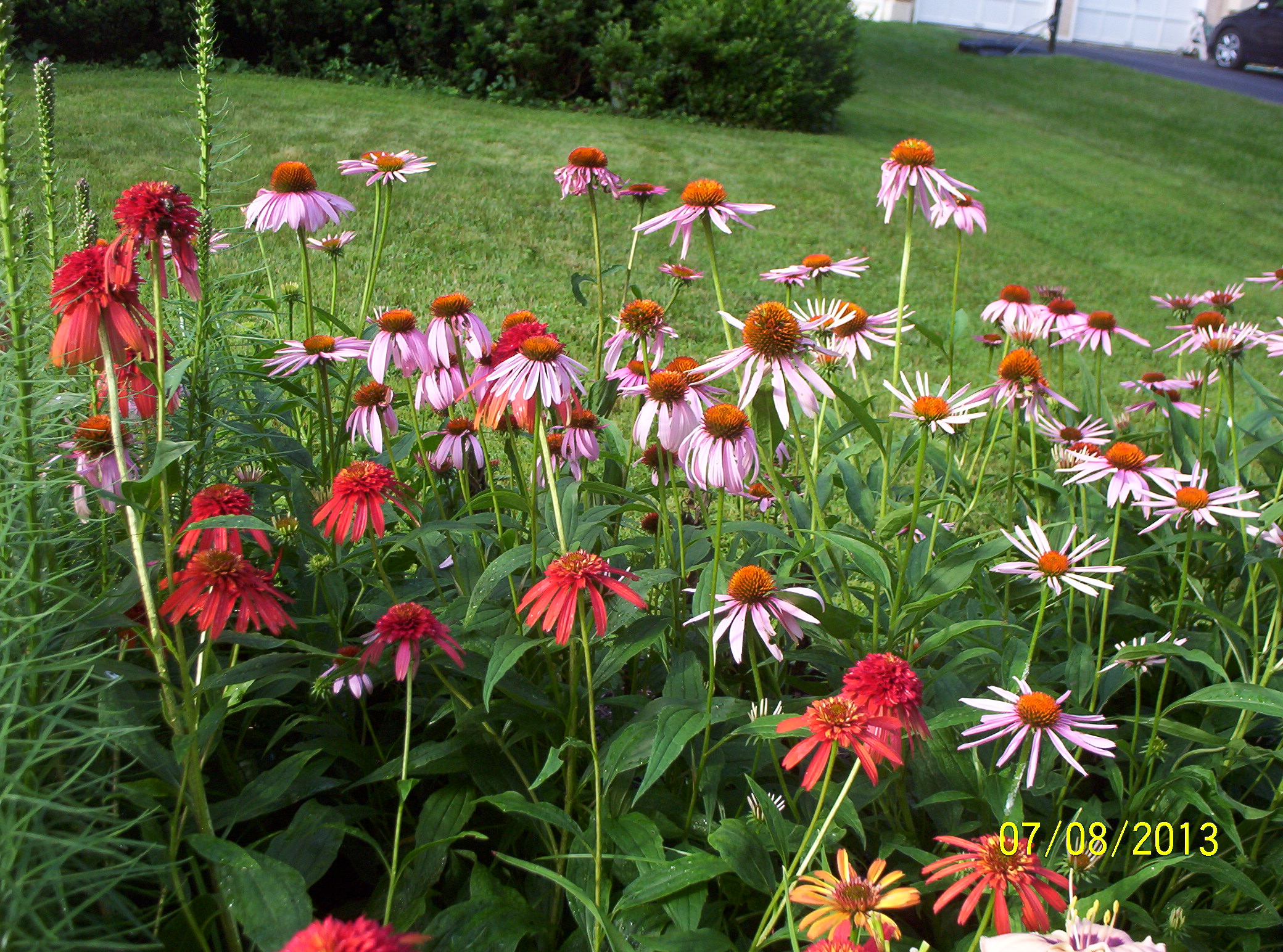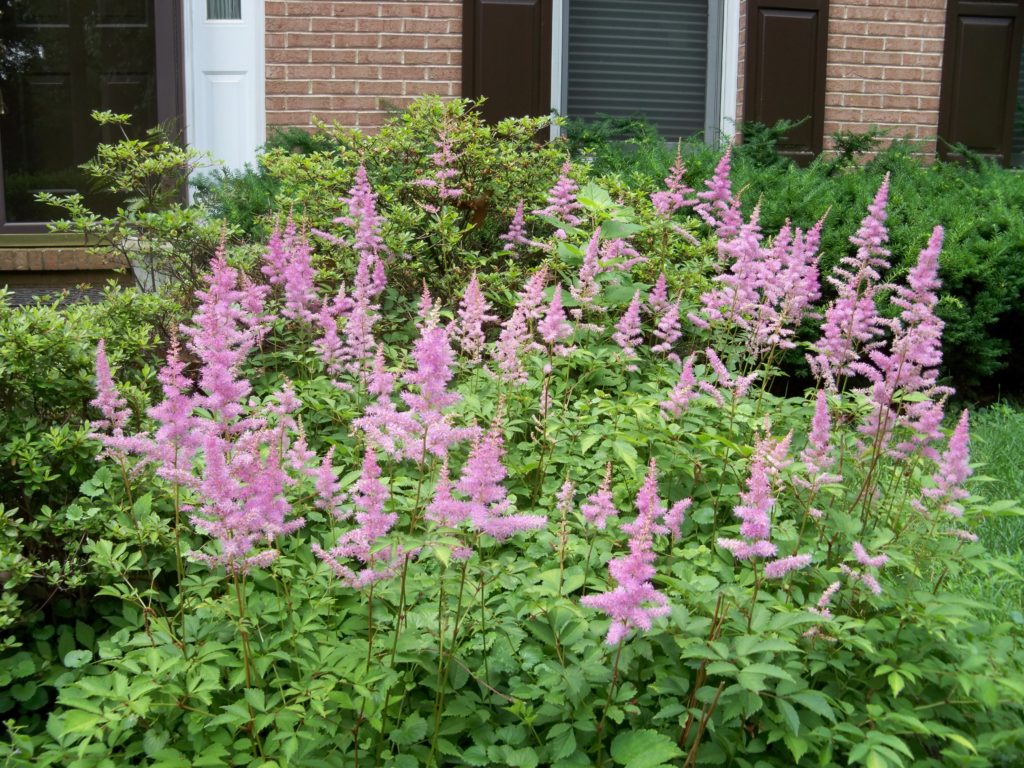
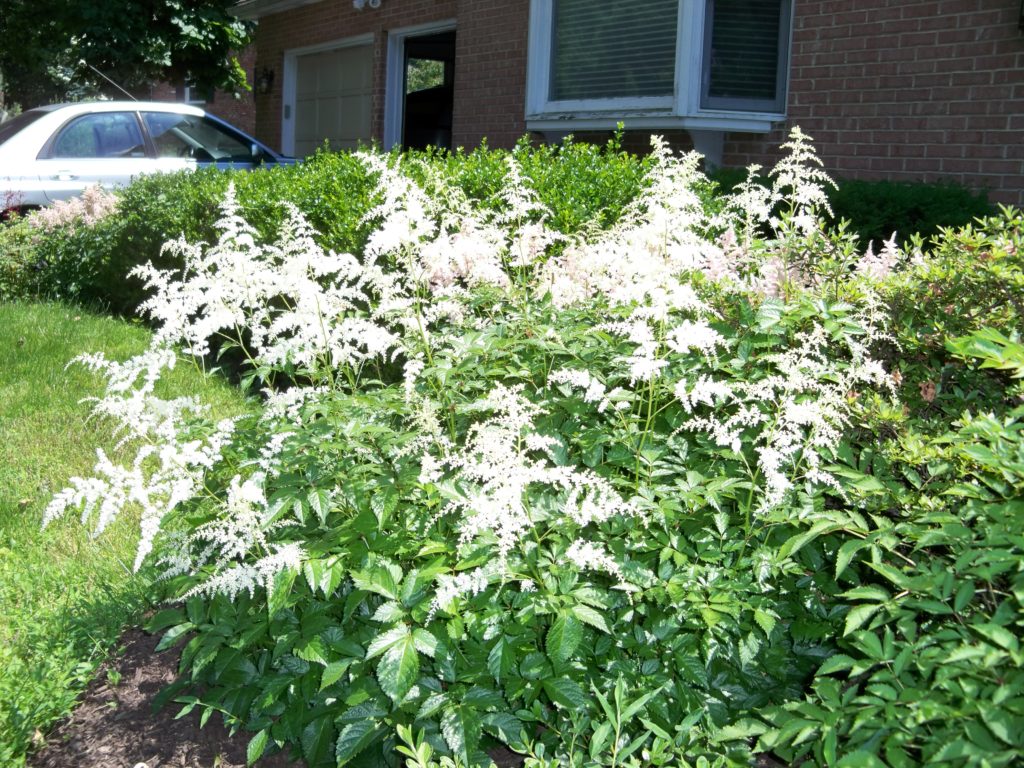
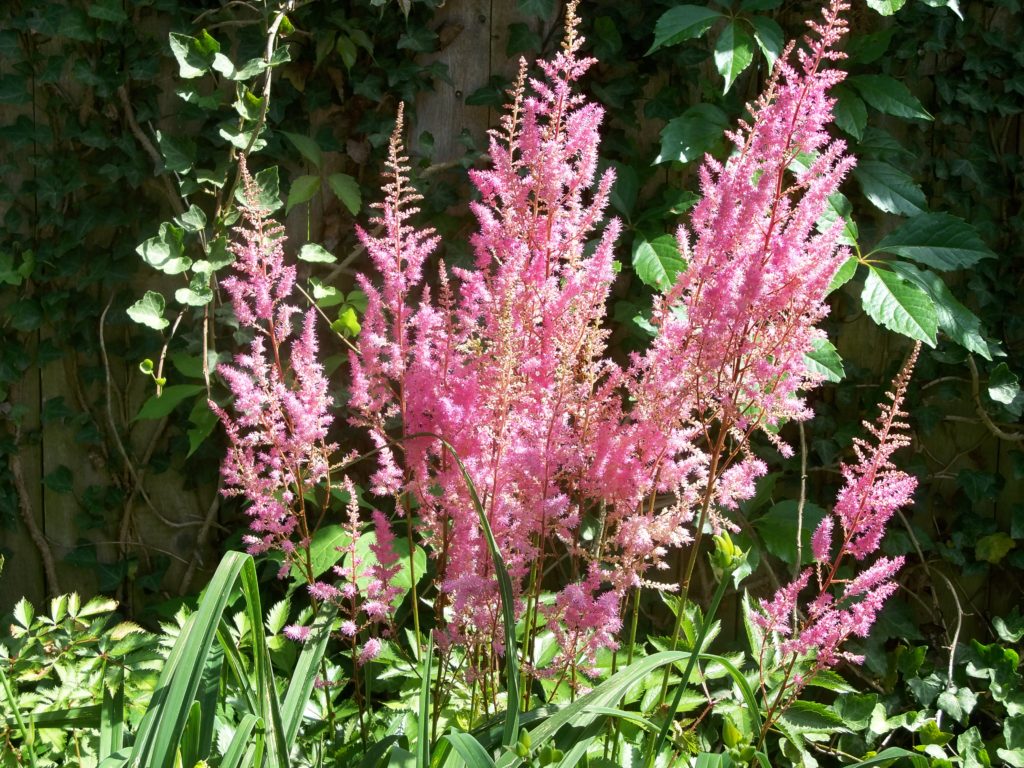
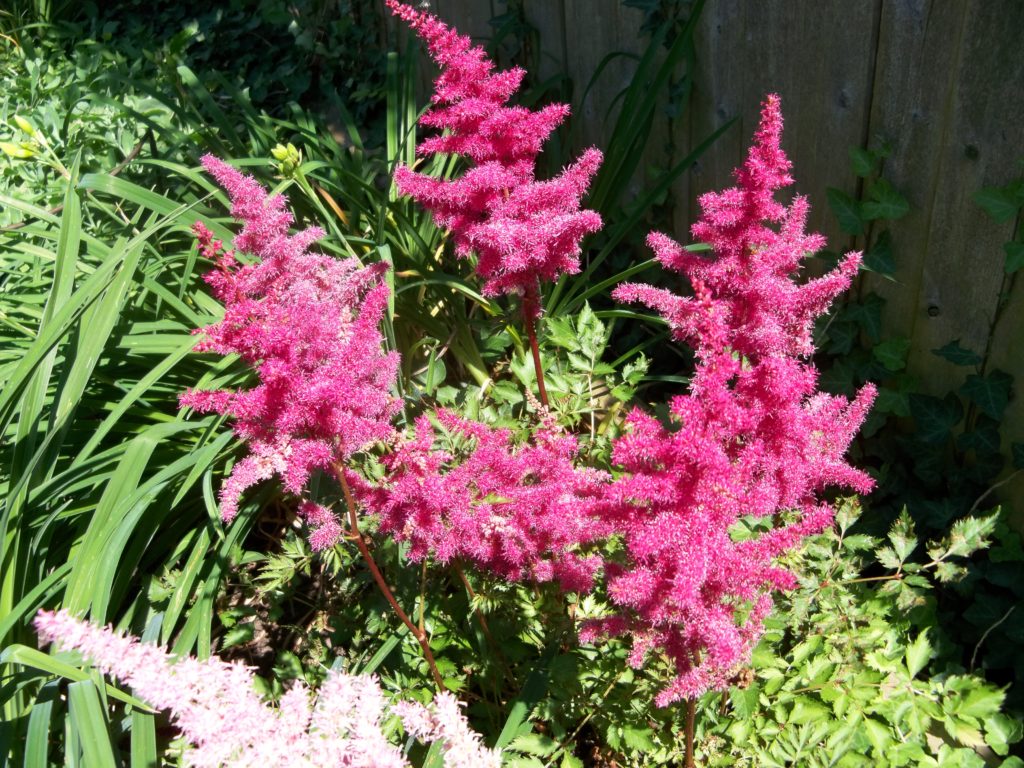
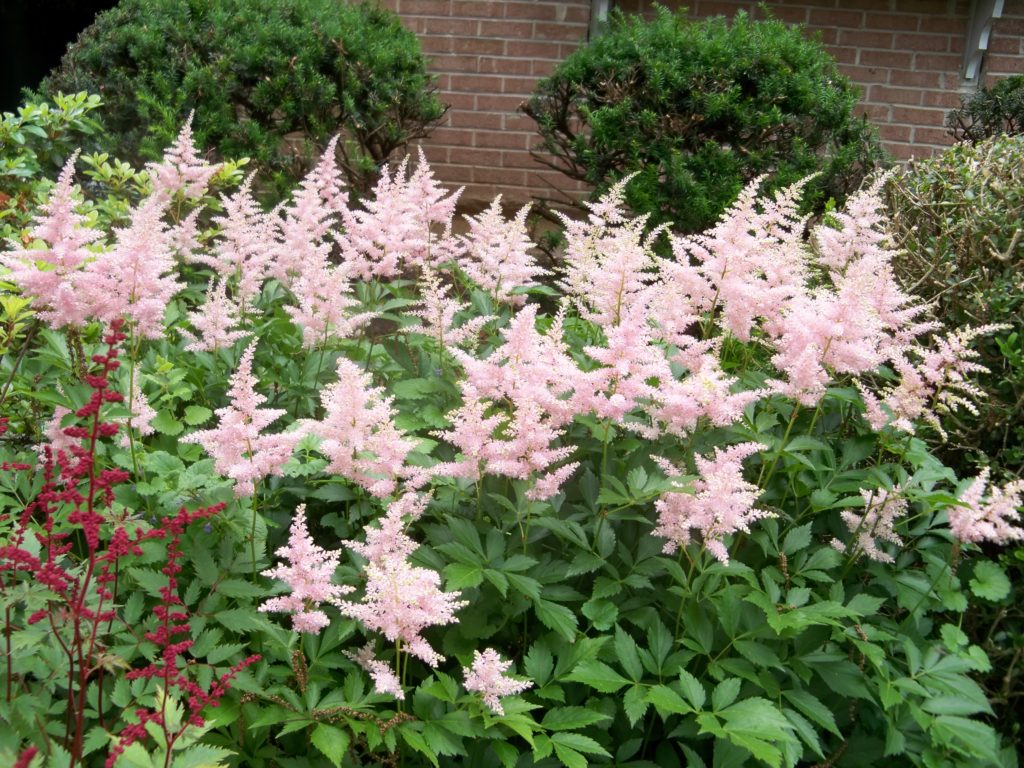
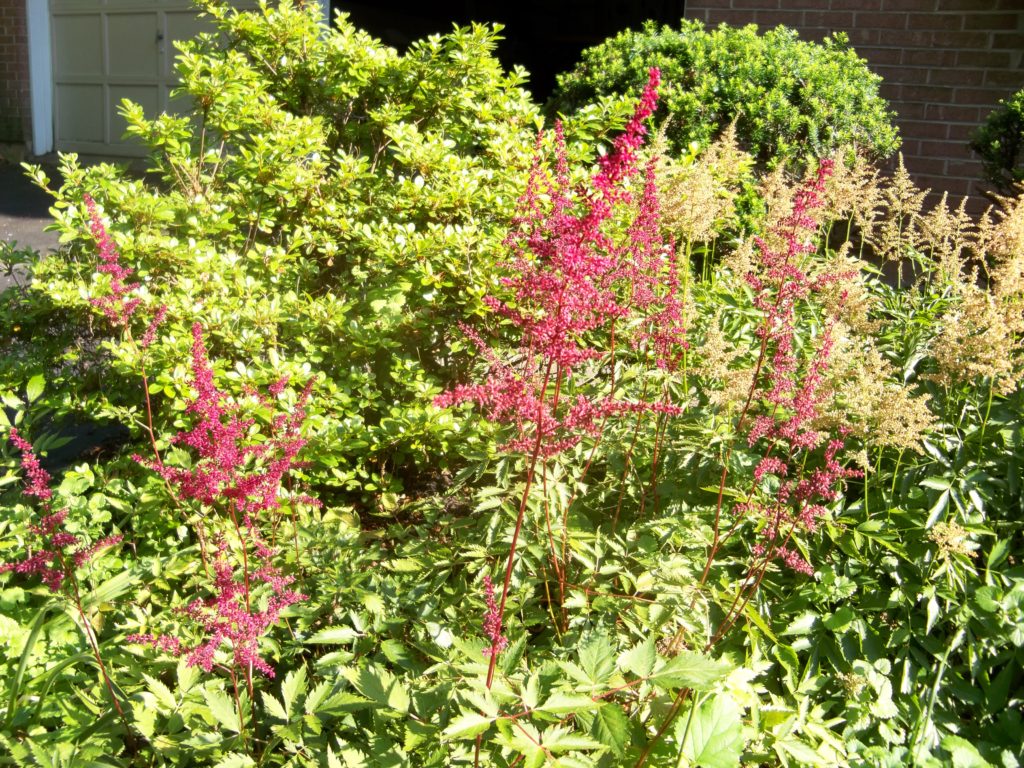
This post provides some tips for growing and caring for astilbes. Astilbes are the perfect perennial for a shady area of your garden. Deer and rabbit never touch them. They are hardy to zone 4. In summer, they produce large plumes of white, peach, lavender or red flowers that brighten up the shady area for weeks. Their green foliage remains attractive till late fall. They come in different sizes, short (1.5 – 2 ft), tall (2 – 3 ft) and giant (up to 4 ft). Taller varieties withstand longer period of sunlight.
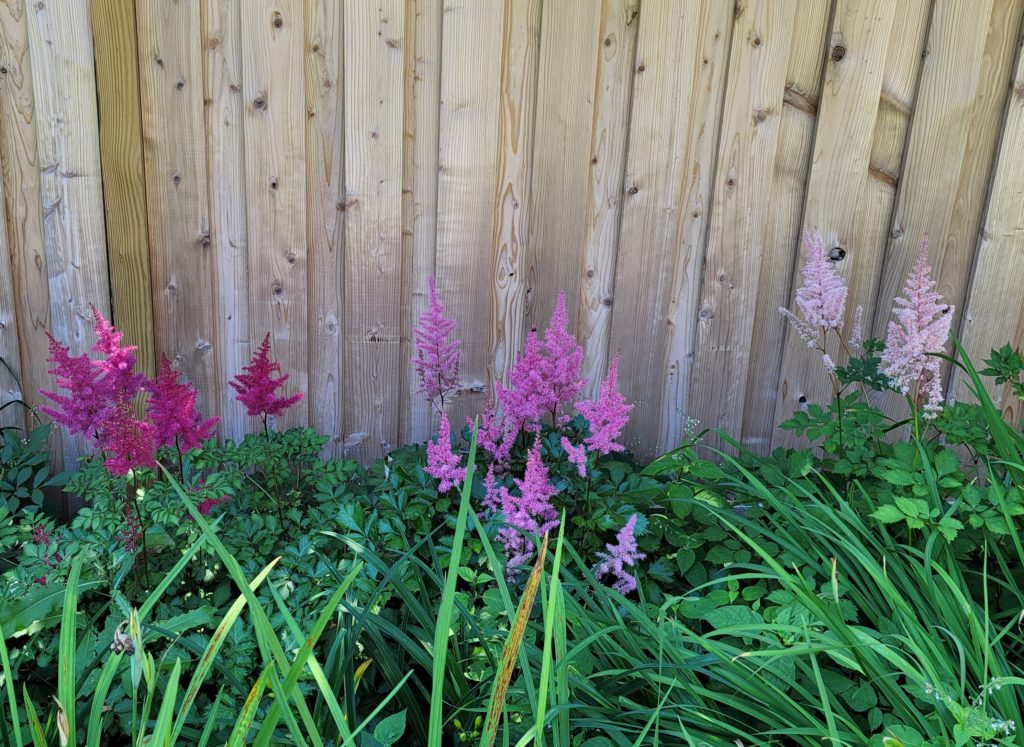
The giant variety, Mighty Pip and Mighty Chocolate Cherry, are available from jungseed.com as bare-root plants. They are perfect for the back of a perennial border along a fence. They add colors to brighten the shady spot. Astilbes are also truly deer resistant. A good companion plant for astilbes is bleeding hearts.
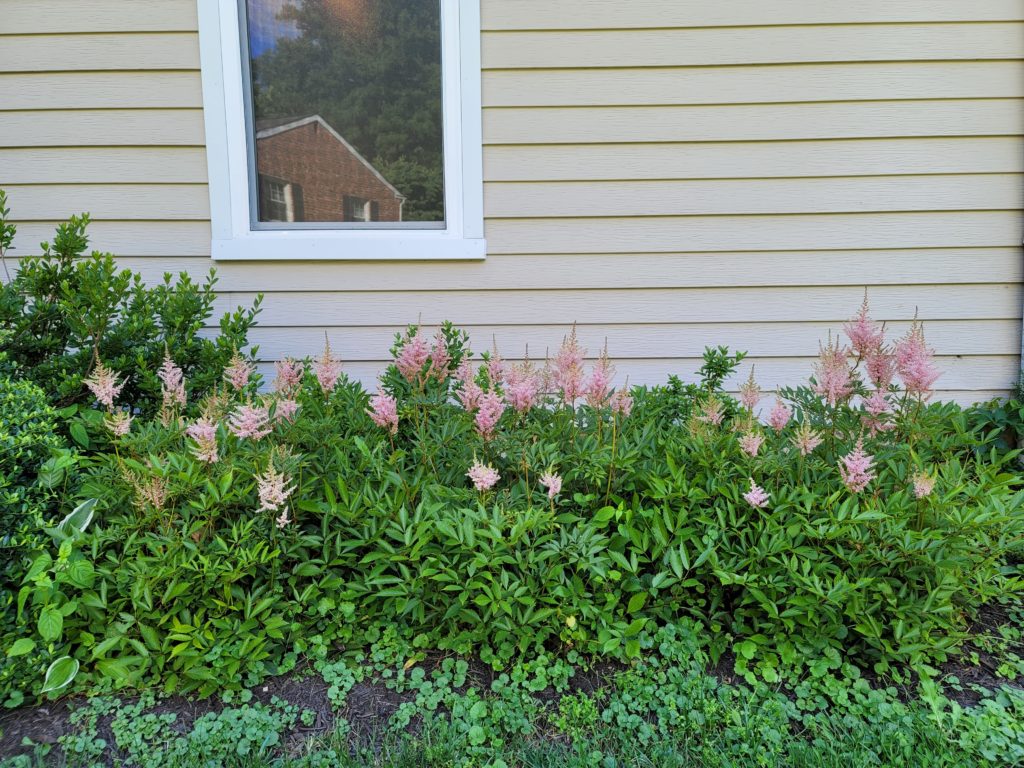
The short astilbes are best suited for border of this east facing flower bed, where they receive only morning sun. Behind the astilbes is a row of azaleas that just finished blooming.
Growing and Caring for Astilbes
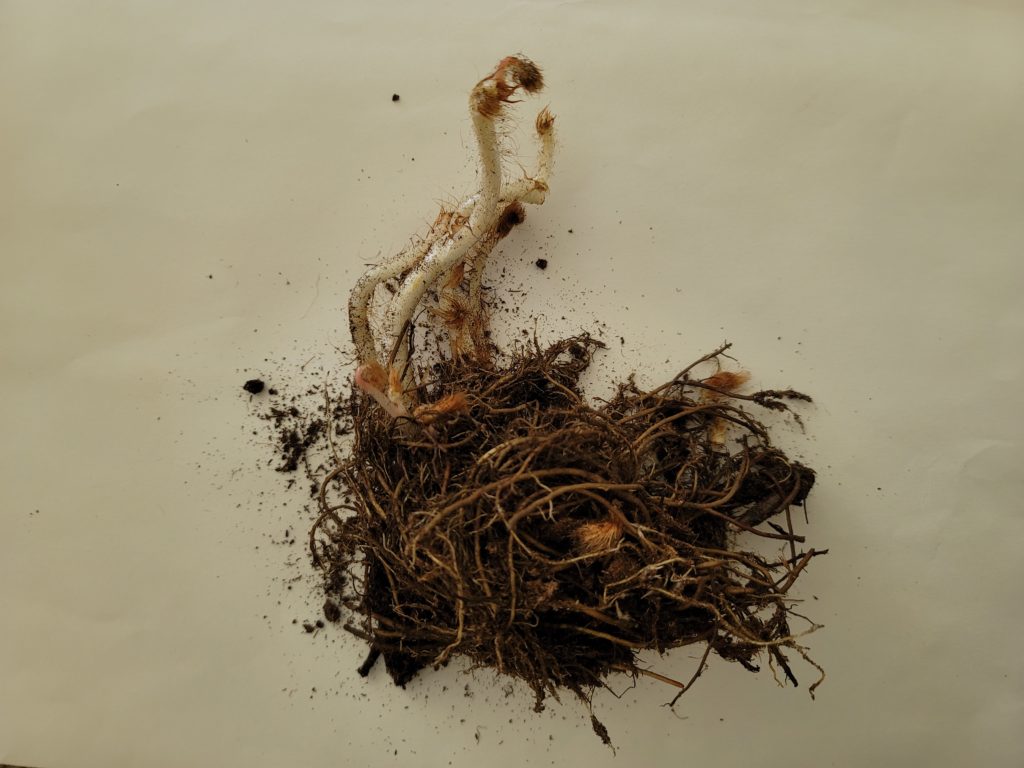
Astilbes can be purchased online from a number of companies such as jungseed.com and longfield-gardens.com. They are available in different colors and heights. They are often shipped as bare roots as shown in the picture shown above. To plant them, just dig a hole in the ground, put the bare root in the hole with the top of the root about 1 inch below the soil surface, and fill the hole with soil amended with compost. If upgrowth has already started, do not compress the soil or you will damage the upgrowth. Just add soil loosely on top. Water the new transplant weekly, and apply fertilizer when leaves appear.
Astilbes are easy-care. However, they are not drought tolerant, and they need watering at least once a week if there is no rain. Otherwise, their leaves will dry up and become crispy. The plants may even die. Maintenance is minimal. In early autumn, just cut the dried flower stalks down to 2 inches above ground. Dead-heading will not produce another bloom. When all leaves have fallen in autumn, remove the leaf stalks also.
Astilbes can grow for a few years without intervention. However, when they are getting too crowded, divide them by lifting up the clump and splitting it with garden forks. The best time to divide astilbes is early spring when the leaves just appear. Older plants may have woody roots. You need to cut them apart by knife or saw. Alternatively, you can cut half of the clump with a root cutting shovel, and lift it up, leaving the other half in ground. You can find the information of root cutting shovel in this post. Then replant the smaller clumps in another location with a spacing of 2 feet.
